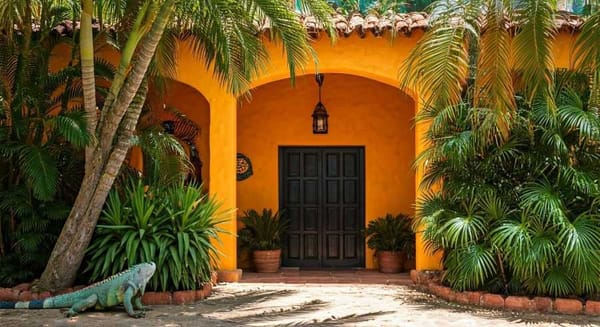The other facet of Francisco Toledo: a tireless social fighter
Tireless activist Francisco Toledo's agenda has earned him the nickname of the "greatest defender of Oaxaca," a land in the constant political struggle in which he grew and settled.

In 2018, the artist Francisco Toledo rejected the Creator Emérito del FONCA scholarship, so that the income he would receive would be administered by the Secretaría de Cultura to be given to the Oaxacan artists who need it most.
In the midst of what seems like a popular festival, nearly 500 people enjoy tamales and atole in the heart of the Historic Center of Oaxaca. This is not just any treat, it is a political treat, a tamaliza that seeks to highlight the value of Oaxaca's traditional food while conglomerating hundreds of people to show the rejection of the establishment of a fast-food restaurant of a transnational chain in the Historic Center of Oaxaca, a site that has been considered a World Cultural Heritage Site by UNESCO since 1987.
The ingenious protest took place in 2002 and was led by the recently deceased artist Francisco Toledo, who then presided over the Patronato Prodefensa y Conservación del Patrimonio Cultural y Natural del Estado de Oaxaca (Patronage for the Defense and Conservation of the Cultural and Natural Heritage of the State of Oaxaca).
This is just one example of another of the concerns, in addition to art, of master Francisco Toledo, who used the resonance generated by his name and the call that attracted his image, after becoming one of the most important and recognized Mexican artists in the country and abroad, to focus attention on social issues related to the preservation of culture and social and ecological justice.
This tireless activist agenda has earned him the nickname of the "greatest defender of Oaxaca," a land in the constant political struggle in which he grew and settled after several years of living in Mexico City and traveling throughout Europe and the United States.
Another of Toledo's main struggles was the defense of Mexican corn; in 2014 he presented the exhibition El maíz de nuestro sustento, which consisted of 42 photographs taken by photographer Rafael Donís and intervened by Toledo. This work was inspired by the typical black and white Juchitán postcards that were hand-colored. The artist used this same technique in the black and white photographic prints of Donís.
This exhibition, mounted in the Juan Martín Gallery, was part of a campaign aimed at collecting a million signatures to support a request addressed to the then Executive to urge the non-authorization of the planting of transgenic seeds in the country, arguing that these put at risk the corn originating in Mexico.
Concern for patrimony and corn were not only on their social agenda but also support for the underprivileged and social justice occupied an important place in their struggles.
In 2015, the Instituto de Artes Gráficas de Oaxaca (IAGO), along with its entire collection, donated to the Instituto Nacional de Bellas Artes (National Institute of Fine Arts) with the intention that the institution preserve and disseminate the collection of 181,000 pieces of art, which at the same time consist of 124,000 pieces of painting and photography, 50,000 books and 7,000 phonograms.
After the earthquakes of September 7 and 19, 2017, Toledo put on sale a series of engravings, money that was used to help those affected by the earthquakes. In addition, Toledo helped 45 community kitchens for more than four months with the purchase of more than 193 tons of food for those affected by these natural phenomena.
At the end of 2018, the artist rejected the Creator Emérito del FONCA scholarship, a recognition that is accompanied by an economic stimulus, so that the income he would receive would be administered by the Ministry of Culture to be given to the Oaxacan artists who needed it most.
That same year, the artist ceded the rights to twelve of his works to illustrate the Mathematical Calendar 2019, published by the independent publisher Googol, created to disseminate mathematics and raise funds for the development of academic programs of the Mexican Mathematical Olympiad. The transfer of rights was made in exchange for the publishers translating mathematical problems into Zapotec so that they could be distributed among the children of the Sierra de Oaxaca.
One of his most memorable artistic-political actions was when in his workshop in Oaxaca he elaborated a series of kites with the portraits of the 43 students of the Normal Rural School of Ayotzinapa, who were disappeared in Guerrero.
The kites were raised in Oaxaca by primary school students in a political act to demand justice for the young people, victims of forced disappearance: "That is a shame that has no name. Politicians want a page to be turned, but that page can never be turned. It remains for the history of infamy," explained Toledo.
Source: Culture bulletin




